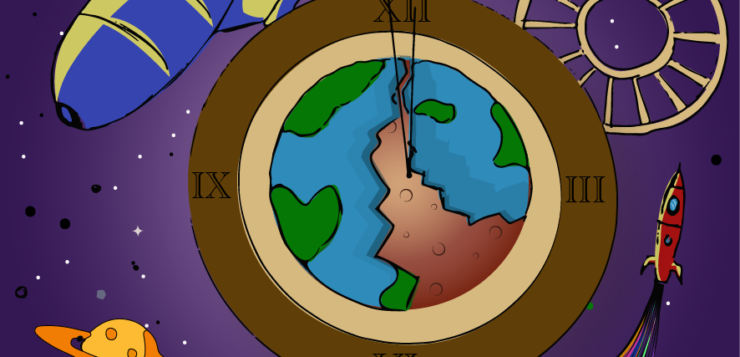Earth is supposed to be the only planet in our Solar System (heck, possibly in the Universe) that supports life. However, it seems unlikely that this will always be the case. With an exponential growth in the human population, rising CO2 emissions, and greenhouse gases, eventually, we may need to turn our eyes towards another home to sustain human life – so, what about Mars?
Estimated as a seven-month journey and crossing a meagre 300 million miles, we’ve had success in landing rovers on the planet and it’s conditions aren’t so extreme as to result in instant death upon arrival. The boons of Mars mostly include that it has a similar day-night cycle to Earth, it’s relatively close to us (in terms of the sheer size of space), and we won’t fry while walking on its surface. In fact, if we could take everything that produces greenhouses gases and stick them on Mars, it would actually benefit the planet rather than harm it at first (counterintuitive but I’ll explain a bit later on).
Yet there are plenty of negatives: Mars has scarcely any water, it’s soil is toxic with high levels of chlorine, its gravity is only about 1/3 of Earth’s, there’s a lack of oxygen, and Mars has no atmosphere. In fact, the atmospheric pressure on Mars is so low that it is below the Armstrong limit, meaning that human blood can boil without a pressurised suit. Not a nice way to die.
So, in turning our attention to whether Mars can be Earth 2.0, it doesn’t look favourable for humankind, at least not if life is only worth living with the same current freedoms we have on Earth. At first, our only option will be building pressurised pods on the planet that humans will have to spend the majority of their time in. Although, these pods would have to somewhat exceed our current technology, as they would require materials that can resist the high radiation levels on Mars, as well as technology capable of filtering the 95% carbon dioxide atmosphere and splitting it into breathable oxygen. These pods would also be an extremely long-term solution because without an atmosphere at all and a complete lack of oxygen, Mars would be a harsh and inhabitable wasteland without spacesuits to keep humans going.
All is not lost for those willing to consider the bigger picture and look far into the future, as scientists have come up with theories for making Mars inhabitable. Some argue that launching nuclear bombs at Mars’s poles could cause a nuclear winter of sorts that would create an atmosphere for the planet. While dangerous, it could open the possibility of kickstarting a level of inhabitancy on Mars. Another option is counterintuitively producing more CO2, to create a blanket of it around Mars. This would help increase the atmosphere on Mars. However, Mars does not have enough CO2 deposits in the rocks and minerals, and we do not have the capabilities to move the amounts needed between Earth and Mars. Other theories and ideas are floating around, but all eventually hit this wall that says our current technology is not currently sophisticated enough.
So, can Mars be Earth 2.0? Well, no, not yet. While it could be a possibility in the future, current technological limitations are seemingly holding us back. However, that doesn’t mean that it will always be the case. Until then, we’re stuck on Earth, and we should probably start taking a little more care of our home because we won’t be finding a new one anytime soon.




